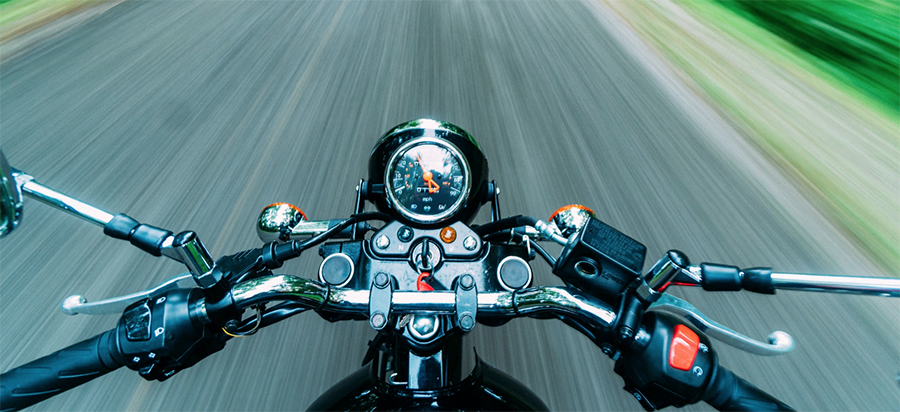
If you’re a motorcycle rider, warmer temperatures mean you’ll be able to take your bike out more often for longer periods of time. Take the time now while the weather is still transitional to do those all-important safety checks to ensure your motorcycle meets all the basic requirements.
Brakes: The ability to stop your bike isn’t really optional, is it? So test the front and rear brakes separately, making sure each feels firm and holds the motorcycle when the brake is pushed down the whole way.
Tires: Good tread is key to driving your motorcycle safely through spring storms and summer thundershowers. Start your tire evaluation by checking the tread on your tires. Look for all types of damage, including cracking and spots where the rubber has dried out. Got good tread? Next, check the pressure in your tires. Keeping the pressure at recommended levels has a big impact on how safely your bike handles.
Lights: Because motorcycle safety depends on visibility, testing your bike’s lights is critically important. Test your headlights, brake lights, and turn signals—and don’t forget your four-way flashers and your dash indicators.
Horn: Alerting other drivers of where you are on the road requires a working horn. Make sure it works before you need it.
Fluids: Read your owner’s manual to be sure you’re filling up and topping off your fluid levels properly, including your oil. Like worn down tire tread, having fluid gauges that are not filled correctly will negatively affect how well your bike handles as well as engine performance.
Controls: Make sure there are no leaks or rust along the lines of your bike’s controls.
Throttle: Make sure your motorcycle’s throttle feels tight and smooth, and that it snaps back when you let go.
Mirrors: Motorcycle safety has a lot to do with controlling the things you can control. Because there’s no way you can be sure a driver is paying attention to you, your safety depends on your ability to keep track of them. So make sure you can see the lane behind you and the lane next to you and adjust your mirrors accordingly. Be sure you can move your mirrors smoothly and ensure that they lock in place.
Helmet & Gear: Once you have your bike road-ready, take a good look at your gear. Your leathers and armor should be free of damage and fit well. Your helmet should be approved by the U.S. Department of Transportation and free of cracks and fit snugly. Wearing a helmet greatly increases your chance of survival if you’re in an accident.
Making sure your bike is road-ready for the spring riding season is only part of motorcycle safety. Practicing defensive riding completes the picture. Know the helmet laws—in your state and in any other state you may pass through. Get familiar with license requirements and insurance laws for motorcycles.
If you or someone you care about has been injured in a motorcycle accident, don’t hesitate to call us or use the form to submit your information for a free consultation of your claim. It’s important to capture any evidence quickly, and to file claims within legal limits.

